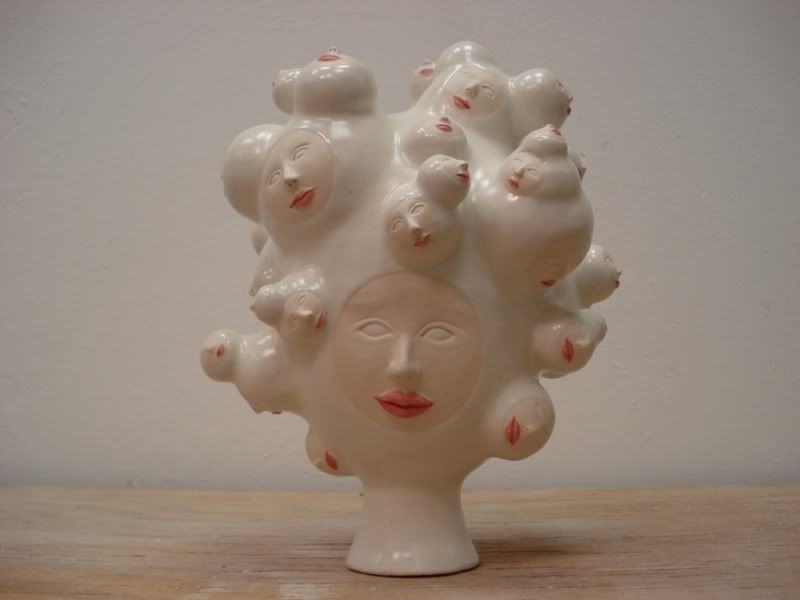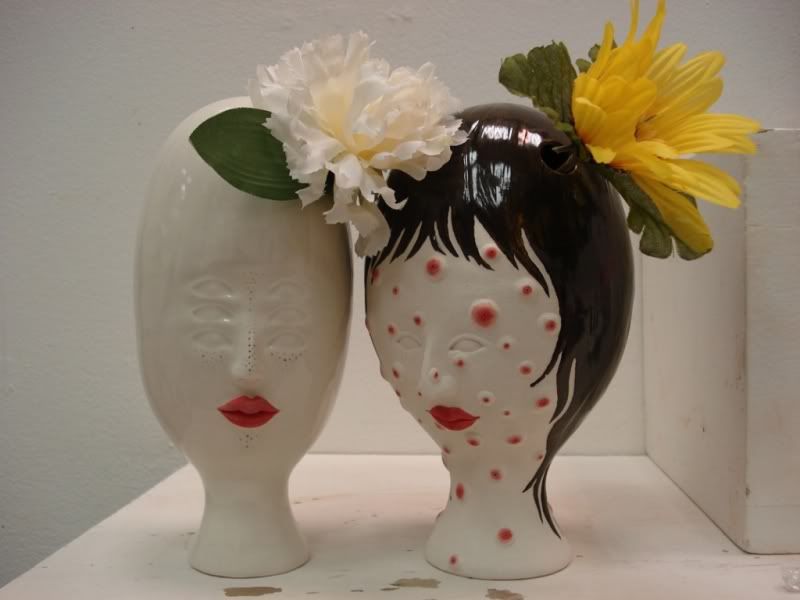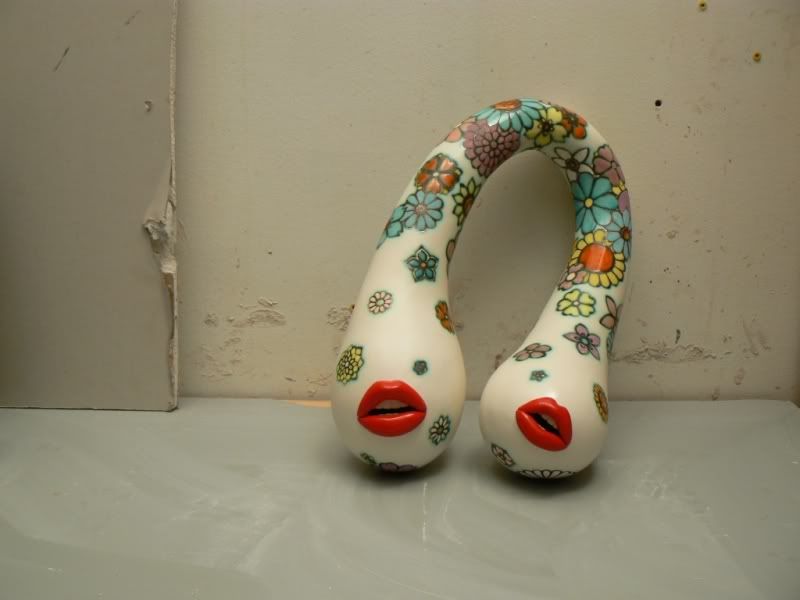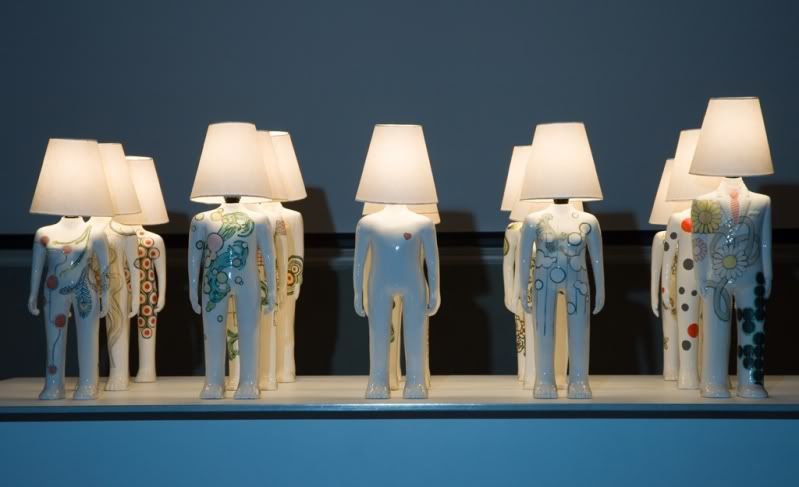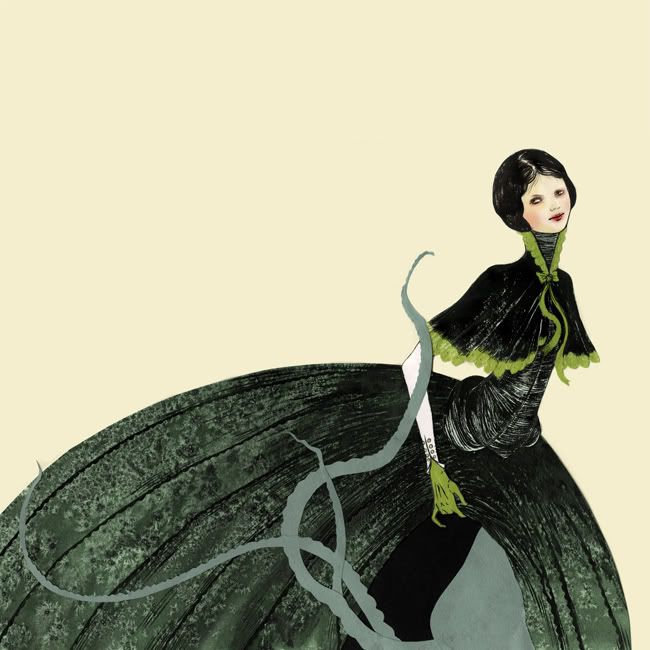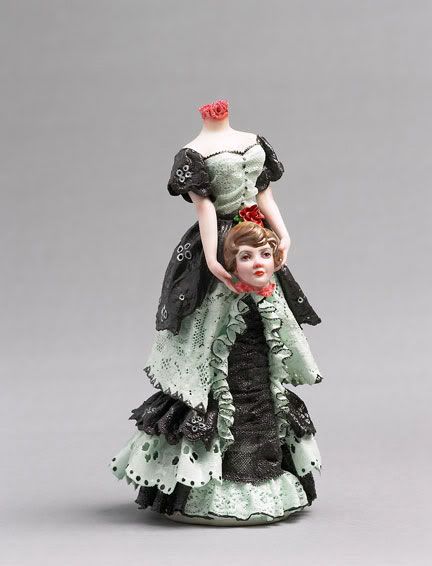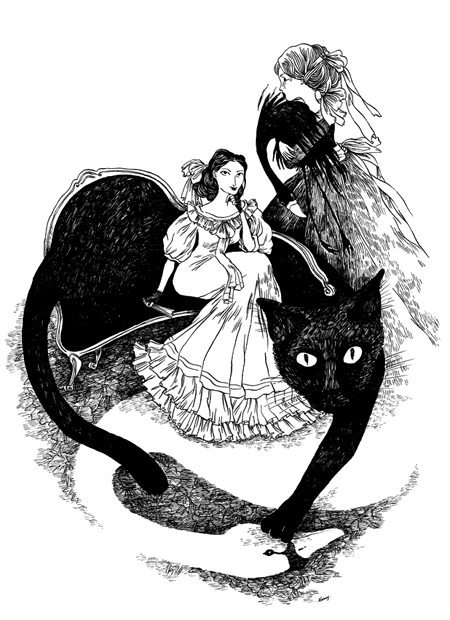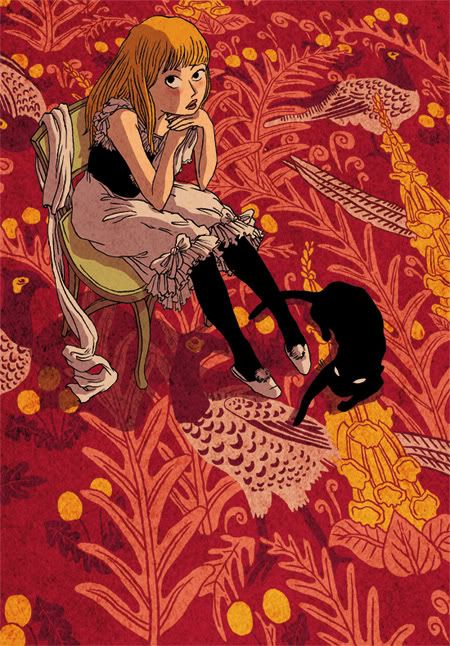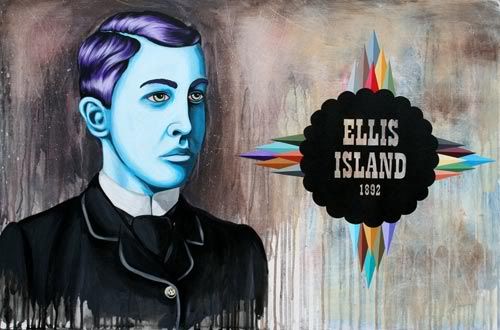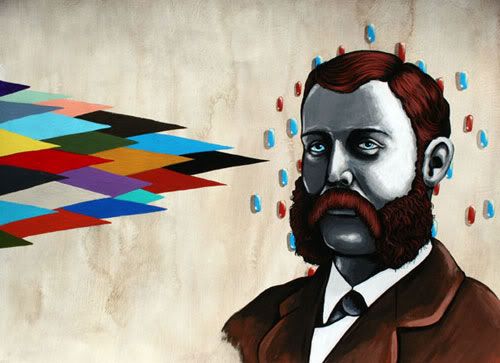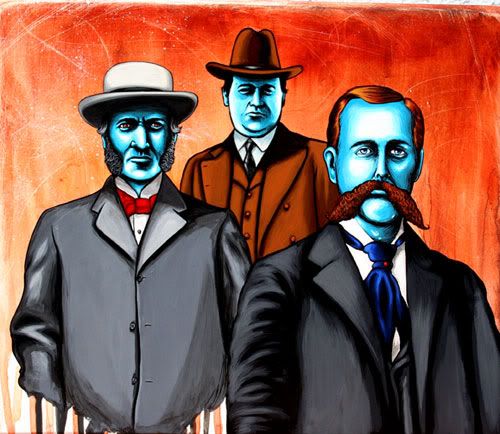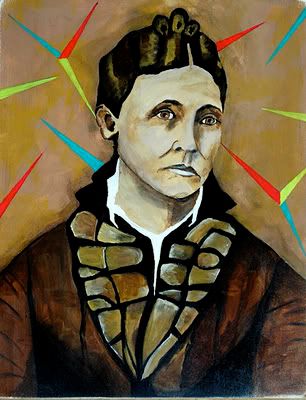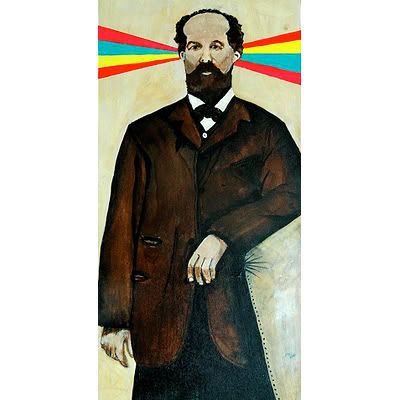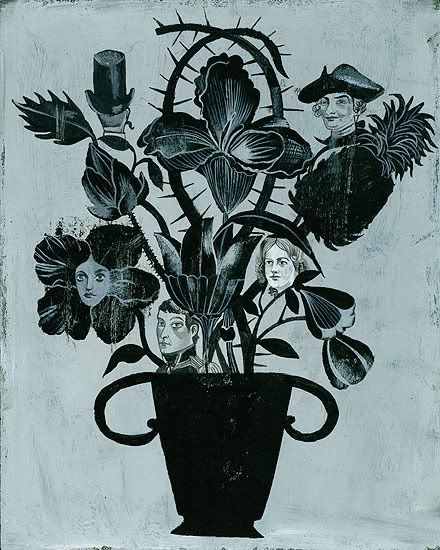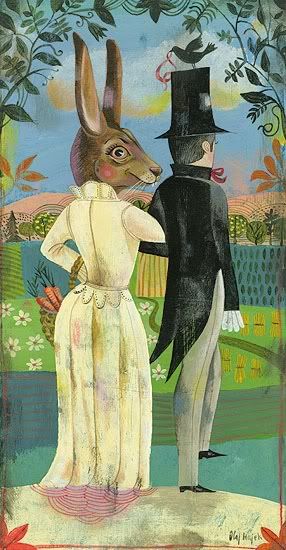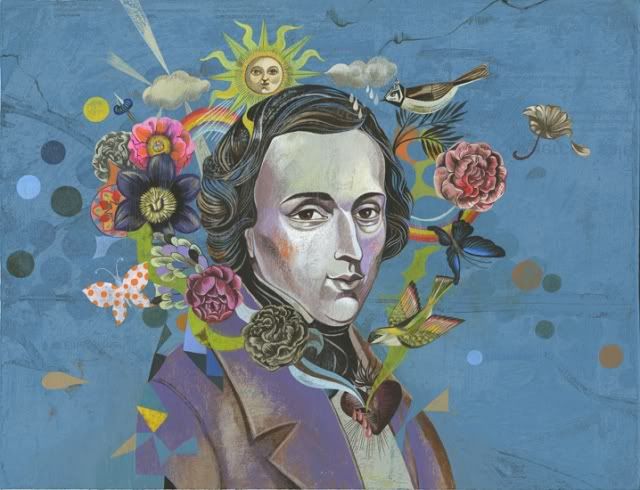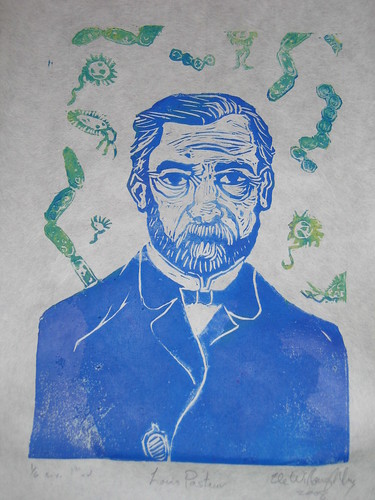 |
The unicorn in captivity, Coral Silverman, gouache on paper,
14" x 20", 2007 |
Here are a couple of artists who have taken recognizable, historic textiles (or whole textile forms), reinterpreted them, while playing with what is the background and what is the message.
Coral Silverman produced a whole series based on the well-known medieval
Unicorn Tapestries - her 'Unicorn Travesties' to look at our disreguard for nature, comsumption, litering and disposable culture. To the left is her
The Unicorn in Captivity,
gouache on paper (14" x 20") 2007 which you can compare with T
he Unicorn in Captivity, ca. 1495–1505, South Netherlandish, wool warp, wool, silk, silver, and gilt wefts; 12 ft. 1 in. x 8 ft. 3 in. (368 x 252 cm), property of The Metropolitan Museum of Art, New York, gift of John D. Rockefeller Jr., 1937 (37.80.5).

"In my Unicorn Travesties series I seek to explore the disregard we currently hold for the environment in the context of historical European iconography. Taking the medieval Unicorn Tapestries as my source, I have re-imagined their scenes as set within the modern world. Visually, I am very interested in the flat floral patterning that makes up the backgrounds of some of the tapestries. In many of my pieces I extract floral elements from their “mille fleur” backgrounds, subtly inserting within the works various pieces of urban refuse, such as cigarette butts, soda cans, smashed televisions, etc. I am using it as an ironic metaphor for the American way of life— a comment on our consumption, our disposable way of living, and ultimately our implication in the destruction of the environment."
American Spirit Blue
gouache on paper (9" x 9"), 2008
Flora Pink I
gouache on paper (14" x 20") 2007
Flora Black I
gouache on paper (14" x 20") 2007
The
Met site includes other tapestries in the series, a discussion of the symbolism in the flora (the medieval viewer would be able to read these signs as easily as we can see that carving on a tree, a chain link fence, litter and the cultural appropriation inherent in American Spirit are all critiques of our culture), and the making of the tapestries. Both
it, and
Coral Silverman's site are worth a visit.
{via
Cabinet of Curiosities, including the Silverman quotation}
 Beth Katleman
Beth Katleman has taken that ubiquitous, 18th century, monochromatic French textile,
Toile de Jouy, both fabric and wallpaper, and reimagined it in full, three-dimensional, kitchy yet creepy present day ceramics.
Folly, (detail), 2010
Porcelain, wire, steel rods and heat-shrink tubing
69 x 96 x 11 inches
"Three-dimensional porcelain 'wallpaper' hovers just off the turquoise wall, as part of a site specific installation at the Jane Hartsook Gallery. The overall installation is 192 x 108 x 11 inches."
Folly, (detail, elf, snail, Sacre Couer), 2010
Porcelain, wire, heat-shrink tubing
15 x 10 x 9 inches
Folly, (detail, flower girl on rock), 2010
Porcelain, wire, heat-shrink tubing
17 x 11 x 7 inches
"Babies scale a rocky precipice with varying degrees of success. A flower girl communes with a nimble lamb."
Folly, (detail, lost duck), 2010
Porcelain, wire, heat-shrink tubing
16 x 16 x 11 inches
"A toothless boy struggles to keep his pants up, a bridesmaid enjoys the view of the Arc de Triomphe from a bridge, reindeer graze and a hapless duckling tumbles off a waterfall."
While you visit
Katleman's site, be sure to look at her other work, called "doll-sized rococo theaters of murder and domestic mayhem," by the New York Times. I mean, who could resist?
{via
Apartment Therapy}







































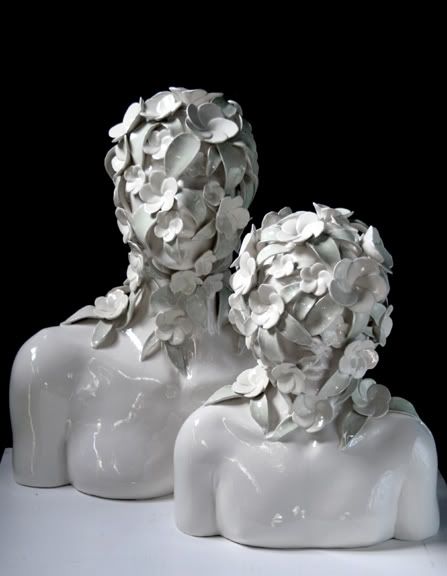
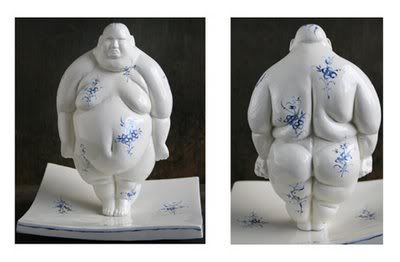
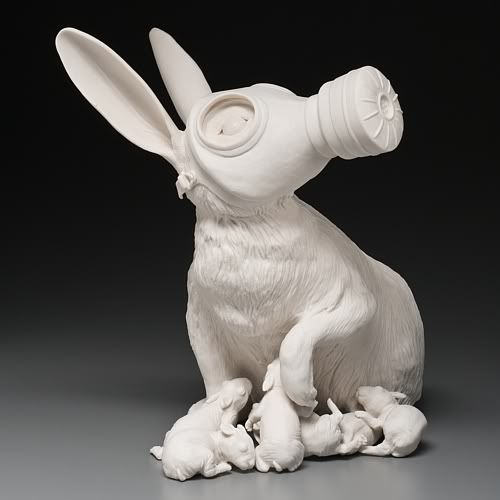
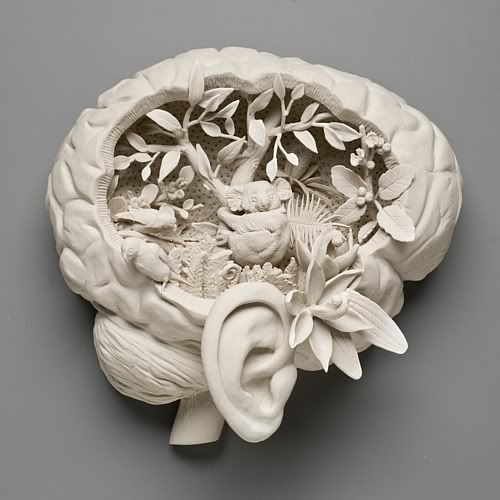

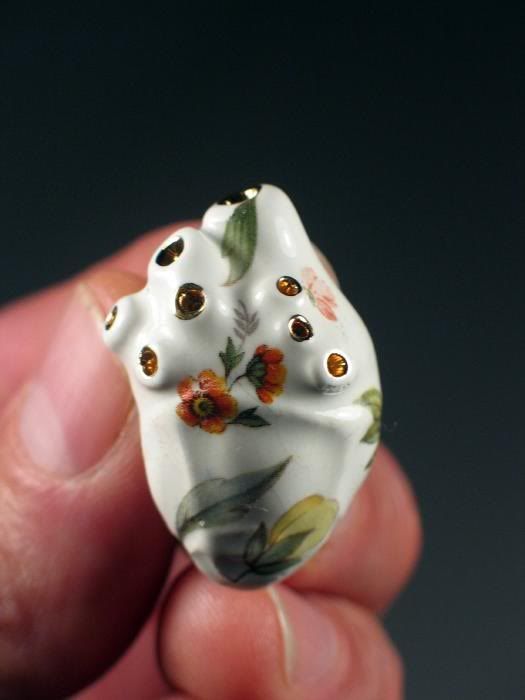 Local Toronto artist
Local Toronto artist 